The Future of Performance Cars

When it comes to high-performance machinery, there has been no better time in the history of the automobile. From 1200-horsepower, multi-million-dollar Veyrons to $23,000, 300-horsepower/30-mpg muscle cars, we really do have it all.
MORE AT MOTORTREND.COM
But for how long? Are we at the peak of automotive performance, or just the beginning? We know the future of the automobile will keep getting greener, but where does that leave those who love rev-matched downshifts and the synchronized scream of pistons, cams, valves, and crank at wide-open throttle? We surveyed the industry and asked several key experts to look 10 years into the future of high-performance cars. You'll be surprised at what they told us...
AUDI: WHEN DOES INTERNAL-COMBUSTION DIE?
"I will not be alive any more. And I hope I'm still living some time, but I'm convinced it will still be in existence. It will stay one of the best solutions, and not only for motorsport.'' -Dr. Wolfgang Ullrich, Head of Audi Motorsport
BMW: M5 UPS THE ANTE
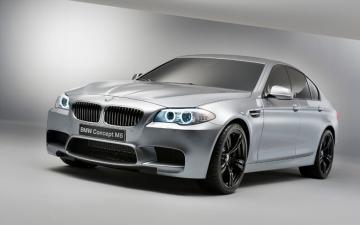
The heart of any BMW M5 is its powerful engine. For the 2012 model, that means the same 4.4-liter twin-turbo V-8 that produces 555 horsepower and 500 pound-feet of torque that's already found in the X5M and X6M. To increase fuel efficiency 25 percent over the V-10 in the 2010 M5, which was rated at a mere 11/17 mpg, the 2012 model will use an automatic start-stop function in combination with a seven-speed dual-clutch transmission. An Active M differential will be employed to split power between the rear wheels, which should improve handling by over-driving the outer wheel in a turn. BMW assures us the M5 has large enough brakes to lap the Nürburgring right from the showroom. When it arrives next year, we will, of course, verify.
DODGE: A FUTURE WE CAN AFFORD
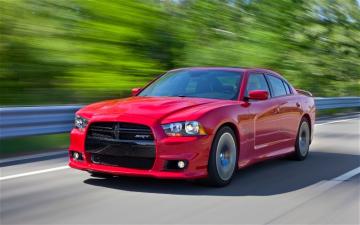
Anytime we've gone through a bit of an oil crisis, technology always bounces back. Everyone probably said the muscle car was dead 30 years ago, but it's actually in full force even stronger. So this year we start with the SRT8, with the first time it's had cylinder deactivation. I keep seeing technologies enabling performance, not being hindered by it. I see that happening... probably more radical swings in the ability to have, let's say, a 400-hp engine that gets 40 mpg as well. We're finding that multispeed transmissions are also a phenomenal thing that's just now starting, almost like the 20-speed bicycle back in the day, that's just now becoming more commonplace. That's a huge advantage -- having an engine that sleeps when it needs to, that performs. On top of that I see Porsche has already started to dabble in this space where you're using hybrid technology as a performance enhancer, not just for fuel economy. So I see the future being all about duality, having your cake and eating it too. Because everyone's going to need that intellectual alibi when they buy their next performance car in 10 years.
What will the SRT8 look like in 2021?
There will still be a handful of V-8s out there, but we're going to invest in fours and sixes. With the SRT, we've had turbo fours in the past. We're looking at active dampening, which we actually have today in the SRT8 Charger. So it's taking all these technologies that people associate with relatively exotic cars, and bringing it down to the Dodge customer, making it much more affordable. -Ralph Gilles, SRT Brand President/CEO; Chrysler Group Product Design Senior Vice President
FORD: WHAT ABOUT THE MUSTANG?
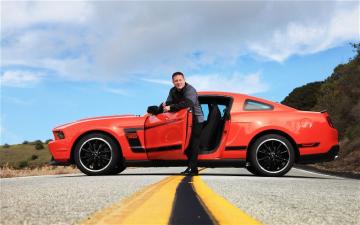
"Innovations in technology, including improvements in aerodynamics, lighter weight materials, and powertrain performance will definitely influence the design and function. The challenge for performance cars going forward is to continue to deliver the 'and' solution that we started with the 2011 Mustang.
Maintaining / improving power and performance while delivering outstanding fuel is a must and will ensure the sustainability of the brand. Mustang will continue to deliver on its promise while paving new ground into the future of high-performance vehicles." -Dave Pericak, Ford Mustang Chief Engineer
GM: A DIFFERENT FORMULA
What will be the key performance-enabling technologies of the next decade?
To the extent that we can boost small-displacement engines, I think it's not just engine technology, because the power-to-weight ratio needs to be good. We have to do things in the industry relative to performance cars to really enable a different formula.
But I also think there are a lot of things yet to come on internal-combustion engines that will be helpful and enable that as well. So it's not over, but it will change, and it will change quite dramatically. The displacement and horsepower piece of that will only get better, in terms of how much we get out of lower displacements, but also it will move to lower displacements, and numbers of cylinders. Because we're going to go after the car -- with a vengeance. -Mark Reuss, General Motors North America President
JAGUAR: TAKING THE NEXT LEAP
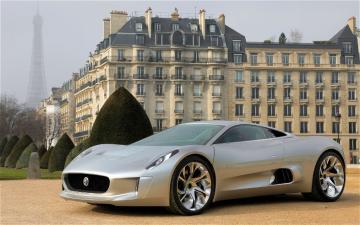
Jaguar takes on the Porsche 918 on the road, if not the track, with its C-X75 hybrid supercar. It's set to take orders this fall, with deliveries beginning in late 2013. The vehicle's name will change, and Jaguar will build just 250 examples at a base price of $1.151 million or more, depending on the market and taxes, based on recent exchange rates.
A 1.6-liter, highly boosted gasoline internal-combustion engine with "not just one simple blower," according to Jaguar-Land Rover engineering director Bob Joyce, combines with two powerful electric motors and four-wheel drive to bring on a sub-3-second 0-60-mph time and sub-6-second 0-100-mph time, plus a top speed of more than 200 mph. All-electric range is up to 31 miles, and Jaguar's estimated CO2 emissions of less than 99 grams per kilometer comes to more than 55.2 mpg.
Will man's thirst for power ever be quenched?
"Where it's going to end up en masse, that's going to take time to find out, but I think it'll be a bit of everything. As far as internal-combustion engines, I think we'll still see V-8s, V-12s, V-6s, whatever they might be. But the jury's out and time will tell... "It's all about efficiency now. If you can get 500, 600, 700 horsepower out of a more efficient engine, then it will happen. When you think that 100 horsepower per liter was once a goal...we're talking 200, 250 horsepower per liter now. That's phenomenal! Man will always want to strive for faster, bigger, better...it's the natural human state." -Ian Callum, Jaguar Design Director
LAMBORGHINI: THE DNA MUST BE RETAINED
What is the key to the future for Lamborghini?
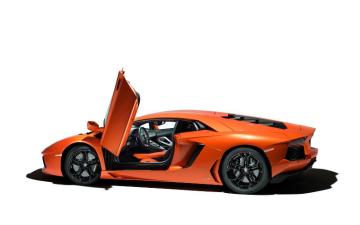
We are pretty sure that carbon fiber will be one of the major players for the structural parts of the next decade. It was forecast that in the next four years the automotive business will be the number-one consumer of carbon fiber, so this is clear. Carbon fiber will be a key for the future to improve safety, to improve the stiffness, and reduce weight.
Turbo or hybrid Lamborghini?
Normally, you talk about turbochargers when you think about downsizing, and downsizing is something that is difficult for a super sports car [manufacturer] like Lamborghini to think about at this moment. I think it is against the heritage of the DNA of the flagship like Aventador. The turbo is something...but at the end, the really sportive car is naturally aspirated. If you are a good engineer, you are able to achieve the best performance without using boost. And for us, the challenge that we have is to be the best. To have the best means to use the best possible, that means the flow efficiency of the intake manifold, of exhaust, reduce the backpressure...everything in the best way. If we talk about [a] hybrid solution, it is the same discussion. We want to use everything in order to achieve our target of reduction of the CO2 of 35 percent compared with 2007. To reach this, you must maintain the DNA. If you put 400 kilograms [880 pounds] of batteries it will be difficult to have a car that can be able to run with handling that we want.
The 2021 Aventador?
If I close my eyes, I want to retain the DNA of Lamborghini, but I want also to be more and more aggressive in the CO2 reduction and fuel consumption. I must think something like this: Cylinder deactivation-we have 12 cylinders, but if I can use in the town three, four, six...if I can have some energy storage, something like this, can be another opportunity. But what is important is to maintain the DNA of Lamborghini. If when I want to open the throttle body, I push the accelerator, I must have 12 cylinders that push me from behind. I must hear the noise. If I don't have this, it is finished emotionally for Lamborghini. And if it's finished emotionally, then there is no sense for Lamborghini to exist. -Maurizio Reggiani, Research and Development Director at Automobili Lamborghini, s.p.a.
MAZDA RX-9: RETURN OF THE ROTARY
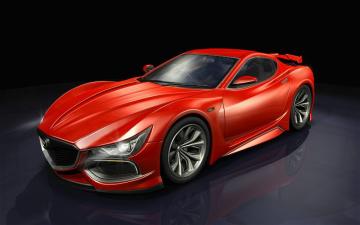
Word from deep inside Mazda's Hiroshima HQ is that development of its much-rumored, rotary-powered RX-9 is well underway. As one source told us, the company has put most of its R&D efforts into its new SkyActiv engines and transmissions and the next-generation MX-5, hampering the RX-9's progress.
"We want to take the RX-9 to the next level, but just can't find the man-hours to do it," says our insider. "We have a guideline. We know what we have to do. But as we must give priority to the next-gen MX-5, we have only a small band of guys working on the RX-9."
Unlike the outgoing RX-8, with its complicated rear-door setup, the RX-9 will be a coupe. This means it will be more of an RX-7 for the 21st century, but with a twist. That twist will reportedly be in the form of hybrid technology Mazda will borrow from Toyota, thanks in part to an agreement the automakers signed last year. Apparently Mazda will only use Toyota's hybrid drive unit, with the main power coming from the Mazda-built rotary. The hybrid unit will reportedly be used primarily as a power booster and range extender. Our confidant tells us there is no point in doing with a rotary what a current gasoline engine can do, hence the move to a hybrid-assisted setup.
"Smaller, lighter, cleaner, more fuel-efficient, and more fun to drive. That's where we want to take the next rotary car," says our source, who hinted at a late 2013 debut. Given the bad rap the RX-8 suffered -- fuel-guzzler, oil-guzzler, weak mid-range torque -- such a radical rotary rebirth is the only way to take Mazda's greatest legacy forward.
MCLAREN: PUSHING THE PERFORMANCE ENVELOPE
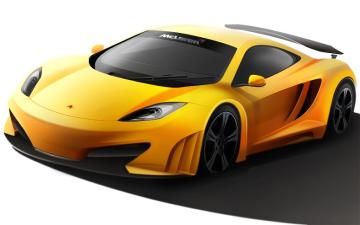
McLaren customers will soon take delivery of the 592-horsepower, mid-engine MP4-12C, but the wizards at Woking aren't resting on their laurels. The company has already announced that it intends to release at least two more models based on the 12C over the next two years. The first should be a street version of the 12C GT3 race car that is currently being campaigned in the European FIA GT3 series by CRS Racing. That $512,000 GT3 race car is limited to a run of 20 and uses a detuned version of the 12C's 3.8-liter twin turbo V-8 paired with a new paddle shift gearbox developed by Ricardo. Expect similar bodywork and race-tuned performance the GT3 street version that should make its debut in 2013.
What will the McLaren flagship supercar be like 10 years from now?
We will undertake further research into the use of carbon-fiber composites. McLaren hasn't produced a road or race car with anything other than a carbon chassis for 30 years. I expect us to continue to find intelligent ways to use carbon in more applications in our future range of sports cars. We'll also consider alternative powertrain concepts. Key to success in this area will be developing energy storage units that are lightweight and efficient, yet allow us to push ultimate performance and increase driving pleasure. We understand sports car customers won't accept compromise, so our future cars must provide class-leading fuel efficiency and deliver the performance one expects of a car wearing the McLaren badge. -Dick Glover, McLaren Automotive, Inc. Research Director
MERCEDES-BENZ: DOES A STAND FOR AMG?
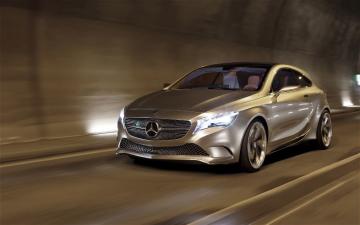
Mercedes-Benz has released several forward-looking vehicles, including the eye-searing SLS E-cell electric supercar, but the future may rest in A-class, according to Ola Kaellenius, chairman of Mercedes-Benz's AMG division.
"That car screams sportiness. Whereas we haven't made an official commitment or a final decision, it's something that we're looking at very carefully," says Kaellenius. Selling a small Benz in the U.S. is something the company has been hesistant to do thus far, but as Americans continue to downsize and car companies face CAFE pressure, the question may no longer be if, but when. Question is, will it be a platform suitable for AMG?
"When we put together a performance package for AMG, it's about the holistic engineering experience," says Kaellenius. "Our goal is to not only have benchmark performance, but also benchmark efficiency in the segment. It's a lot about the chassis. For a lot of AMG cars we re-engineer the chassis completely to fit to the driving profile we're looking for."
NISSAN: THE ELECTRIC GT-R
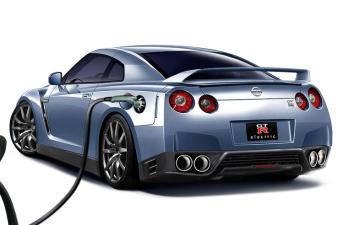
Electric GT-R? Really? Carlos Tavares, recently promoted to COO of Renault, hinted at as much at the 2011 New York auto show. "Of course, it's going to be zero emissions. Because your kids, my kids, they will very soon select their car from a short list of zero-emissions vehicles. That's going to happen very soon -- my kids or the kids of my kids at the latest. So it's going to be zero emissions... going to be connected and plus plus plus in safety, comfort, and entertainment."
Of course, zero emissions can be achieved without going full electric, but Nissan has already set a couple of precedents. The Leaf is currently the only electric car available in the U.S. by a major automotive manufacturer, and the company took it racing with the Nismo Leaf RC.
"Well, the GT-R is going to have, of course, a different balance of those attributes. But you have here the Nismo Leaf RC, which is, of course, a racing car. But it's a racing car to make a statement that there is nothing contradictory between an EV power source and the pleasure of driving fast-in a racing car in this case." Electric GT-R? You heard it here first...
PORSCHE: EMBRACING HYBRID TECHNOLOGY
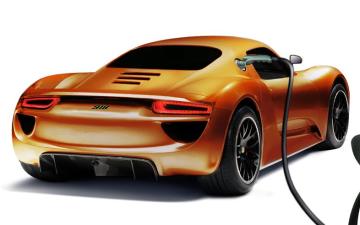
Of all the sports car makers, Porsche has been the first to openly embrace hybrid technology. It's been only with the company's two best-selling (and least-sporty) models, the Cayenne SUV and Panamera sedan, but, according Dr. Michael Steiner, director of the Panamera product line, that should change.
"From our point of view, hybrid technology could help provide some additional performance. We are also thinking of additional downsizing. If you look at the 911 Turbo, it is an example of engine downsizing. We only have six cylinders, turbocharged, and we have the power of competitors' V-8 engines. In the future, we are also thinking about having a four-cylinder engine, but only if it can provide a strong level of performance. There is no decision made yet. There could be a hybrid version [of the 911] in 10 years. Most likely we will give the customer the choice between a traditional high-performance car or a hybrid car. It will depend on the market situation, on tax regulations and things like that, which car will be the faster one."
How far into the product line will Stuttgart apply hybrid technology? If the company's $845,000 918 Spyder hybrid is any indication, all the way to the very top.
SUBARU: UNVEILING THE NEW DUO

Two significant projects fill Subaru's highly anticipated performance docket, and the first is a rendition of the Toyota/Scion FR-S rear-drive sport coupe. Like the Scion, the coupe's compact dimensions and sumptuous design are undoubtedly athletic and modern. But while its form may evoke a notion of triple-digit speeds, it is the nimbleness of the car's lightweight chassis that engineers are most enthused to highlight.
Subaru Tecnica International (STI) is currently beefing up an STI model based on the new 2012 Impreza and soon-to-be released WRX. Expect to see a more muscular physique with wide shoulders and hindquarters. Handling benefits from a broader track, a heavily revised suspension, and an aggressively returned all-wheel-drive system. When it hits dealers sometime late next year, you can bet it will be the most powerful STI sedan ever, and likely the most efficient.
TESLA: STILL JUST SCRATCHING THE SURFACE
What will Tesla's flagship sports car be like 10 years from now?
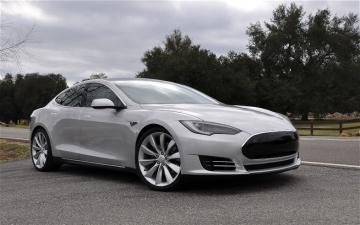
Far better! The Model S motor packs twice the continuous power of the Roadster's, is about the same size package, and was developed in only three years. We are still just scratching the surface with the capabilities of an electric powertrain. It is not bound by the mechanical constraints of a combustion engine -- the possibilities are scary. Also, the relatively compact and efficient design of electric motors allow for much increased packaging options. -J.B. Straubel, Tesla Motors Co-Founder and Chief Technical Officer
TOYOTA: THE PERFORMANCE SCION
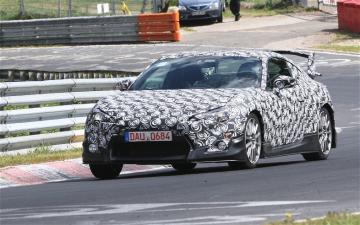
You've probably already seen the various takes on the Toyota concept commonly known as FT-86 -- a play on the famed '80s-era Corolla GT-S code named AE86. In 2012, this new-age sport coupe will be sold as the Scion FR-S in the United States (in conjunction with the version co-developed with Subaru) and the ingredients are intriguing.
The FR-S ticks many of the archetypal sports car boxes. The drive wheels are at the rear, and a six-speed transmission is under hand. A finely balanced chassis promises agile handling, helped by an ambitious low weight target and special engine selection. Sitting up front is a tidily packaged, 2.0-liter boxer four-cylinder sourced from Subaru, and mounted as close to the ground as feasibly possible and pushed deeply toward the vehicle's middle to optimize the coupe's center of gravity and polar moment of inertia.
The lightweight Scion is expected to not only dance in the curves, but achieve impressive efficiency as well. With federal fuel economy and emissions police always around the corner, the FR-S' timing couldn't be better.
A FUTURE ACCORDING TO MAXIMUM BOB
What will be the key performance-enabling technologies of the next decade?
A lot of the performance mid-range and low-end torque may well wind up enabled by batteries and torque assistance, for fuel economy and performance. So, the idea of an ultra-performance hybrid car, maybe even plug-in, with say eight to 10 gasoline-free miles in town and the rest of the time the electric drive system serving to enhance torque, is a very credible proposition. Two generations from now, it's entirely conceivable that a Corvette -- not a GM plan, this is just purely hypothetical on my part -- would be a direct-injection, stratified charge, twin-stage turbo-boosted two-liter, four-cylinder engine developing 800 horsepower.
Is the V-8 dead?
I think it's definitely moribund. Absolutely. Everything is moving to smaller engines and smaller numbers of cylinders. This new generation of Malibu will not be offered with a V-6. In cars that had both sixes and fours, the six is being kicked out, and everybody is emphasizing the smaller engine.
Final thoughts?
We had 75 years of Communism in China, where we raised generations of kids who never heard the sound of a decent engine. And yet, the minute the shackles are off, the Chinese youth are performance-car crazy. So I think it's an innate part of the human being, you could argue especially males, that we love high-performance automobiles. And if they can't buy them when they're young, they buy them when they're old. -Bob Lutz, former vice chairman, General Motors, member of advisory board, Lotus Cars
BY THE NUMBERS: WE LOOK BACK TO SEE WHAT'S AHEAD
Even performance cars like the 911 and Corvette have weighed over a ton and a half for 30 years. That these cars will fall to an even ton in 10 years seems unlikely. We examined data from the past 20 years for the 911 Carrera 2, base Corvette, Mustang GT, Miata, and M3 and plotted power, weight and the resulting power to weight ratios. We then used that data to project where these cars would be 10 years from now with no outside intervention. While the projected weights of Mustangs, Miatas, and M3s seem unlikely, the numbers for the 911 and Corvette are almost believable. Likely the most believable of these graphs is pounds to horsepower. How we get there is another story.
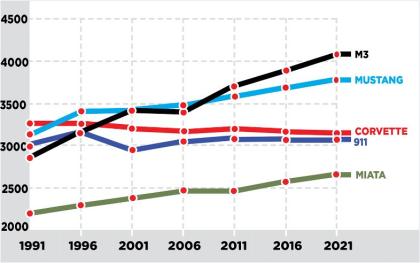
WEIGHT:
While the 911 and Corvette seem to have leveled out in weight, BMW continues to increase size and weight of the M3. It is unlikely that the M3 will ever reach the nearly 4100 projected pounds, but some of that will depend on the ever-inflating size of what was once the small Bimmer.
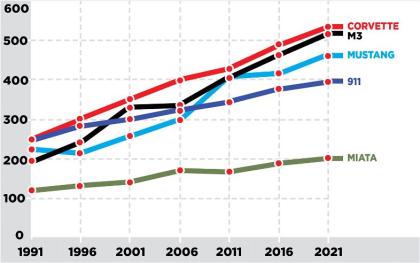
HORSEPOWER:
Although it's claimed the power war is over, the numbers say otherwise. Another battle is being fought on the emissions and efficiency fronts, as well as with government regulators. Future tech will allow smaller gas engines to be supplemented by electric motors. The Corvette may easily reach 533 hp and 40 mpg using a 350-horsepower forced-induction engine and a 183-horsepower electric motor.
POWER-TO-WEIGHT RATIO: While the Miata's power seems to have plateaued, we'd like to think that weight will start dropping substantially and decrease the pound/horsepower ratio. The Corvette is projected to reach 5 pound/horsepower by 2016, squarely where the ZR1 sits in 2011. Porsche can currently add more than 200 horses with a 250-pound KERS system, and the technology is still evolving.

 Yahoo Autos
Yahoo Autos 
